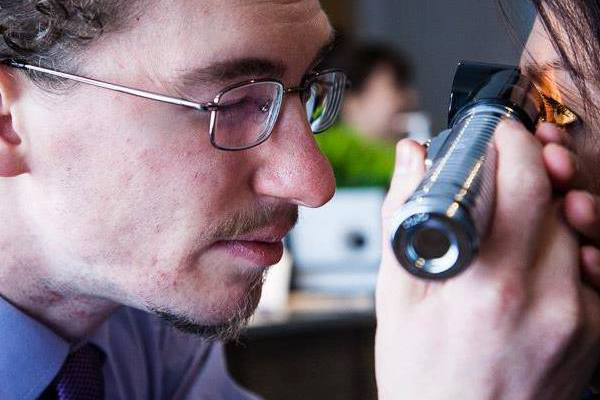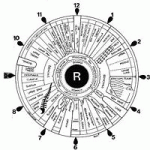Iridology (irid- or iris: coloured part of the eye, -ology: study of) is the study of the iris, the coloured part of the eye, by way of identifying constitution, patterns, colours and fibre arrangements present within the iris. These manifestations give indication to our physical and psychological makeup. Iridology can be used to identify: inherent strengths and weaknesses of organs and body systems whether inherited or acquired, the stages of dis-ease, physical and psychological dispositions and tendencies, and future challenges.

Iridology is a diagnostic tool that can be used to help determine the underlying cause(s) and stages of dis-ease, location of irritation or inflammation in the body, and which organs and body systems are being affected.
Iridology developed over many centuries, much like acupuncture, by trial and error. One of the earliest contributors to iridology was a Hungarian doctor named Ignatz von Peczely. He recorded changes in patients’ eyes before and after surgery and published his first iridology chart in 1880. Bernard Jensen was one of the first to introduce iridology in North America during the nineteenth century. From his work, more current iris charts exist today. Iridology research continues and discoveries continue to be made about this fascinating technique.

There are other eye-related techniques for determining the health of an individual. These include sclerology, pupil tonus, and rayid. Sclerology looks at the sclera, or white of the eye, for blood vessels and indicator lines to help direct attention to possible imbalances in the body. Pupil tonus is concerned with the shape, size and position of the pupil. Rayid can provide insight into the deeper emotional and psychological tendencies of an individual. All of these techniques are included in our services.
Our comprehensive Iris Analysis includes iridology, sclerology, rayid and pupil tonus, to provide us with a snapshot of your past, present and future health challenges, and allows us to offer effective nutrition and lifestyle recommendations to restore balance and help prevent illness.

Iridology will help you and your practitioner:
- Understand your most important health challenges
- Gain insight into organ strengths and weaknesses
- Observe the stage and location of dis-ease and inflammation
- Learn about your emotional and psychological tendencies
- Connect past diet and lifestyle choices and present challenges
- Reveal familial health imbalances and tendencies
- Discover possible reasons for dis-ease
- Discuss appropriate nutrition and lifestyle choices to prevent dis-ease
Initial Consultation

During your visit, we capture digital images of your eyes to review them with you, and take you through each step of the iris analysis.
We then discuss various aspects of your lifestyle and diet, and offer recommendations in areas of nutrition, lifestyle and nutritional supplements, to naturally support your body and bring it back into balance. We may additionally discover hidden causes for imbalance and how they may be affecting you today.
Fees
| 60 Minutes | $200.00 |
All fees include the HST
Follow-up Sessions
Since the iris takes time to change, we generally recommend having one iris analysis performed each year, however it is suggested that we meet regularly to help keep you motivated toward your goals.
For follow-up session fees, please refer to the following table (as set out on the Nutrition & Lifestyle Counselling page):
| 60 Minutes | $80.00 |
| 45 Minutes | $60.00 |
All fees include the HST
Contact Us
Please get in touch with us should you have any questions or concerns, or if you would like to schedule an appointment. We look forward to assisting you on your path to optimal health!